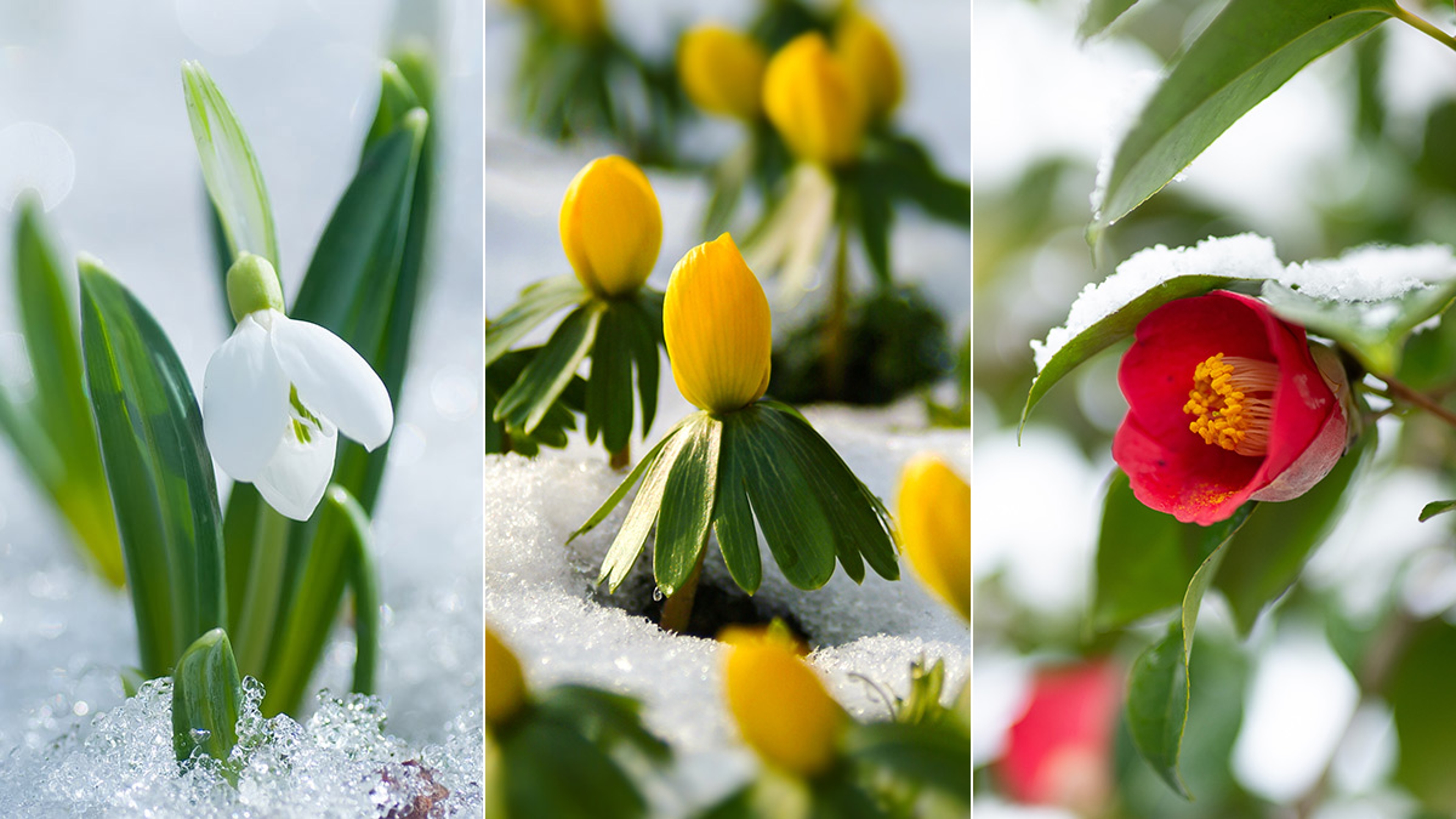Winter’s Blossoming Beauties: 15 Flowers That Brave the Chill
These blooms brave the cold temps to provide us — and their surroundings — with warmth.
Jan 04, 2024
Winter is often associated with a dreary and colorless landscape, but that doesn't have to be the case. Despite the cold temperatures and shorter days, plenty of flowers still bloom in winter, bringing a burst of color and life to their surroundings.
These winter blooms not only add aesthetic appeal but also serve as a reminder that beauty can thrive even in the harshest of conditions. Whether you're planning a winter garden or simply looking to appreciate the wonders of nature, this guide to 15 types of flowers that bloom in winter will help you keep your yard looking vibrant during the cold season.
1. Hellebore (Helleborus)
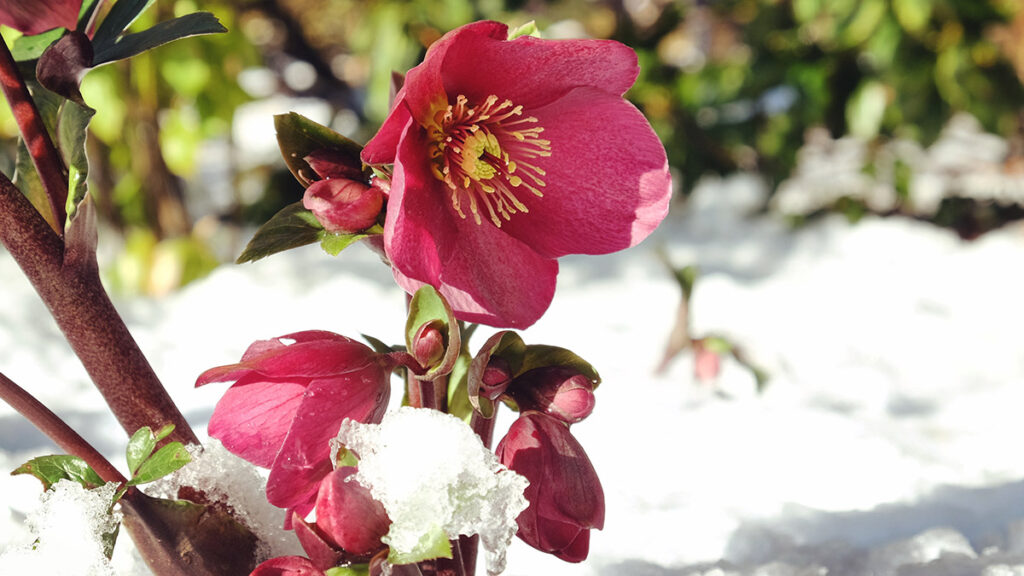
These cup-shaped perennial flowers, which are also known as Lenten roses, come in various colors, including pink, purple, green, and white. They thrive in shady conditions and are one of the earliest bloomers of the year.
USDA hardiness zones: 4-9
Sun exposure: Partial to full shade
Bloom time: Late winter to early spring
Soil needs: Well-drained, rich soil
2. Witch hazel (Hamamelis)
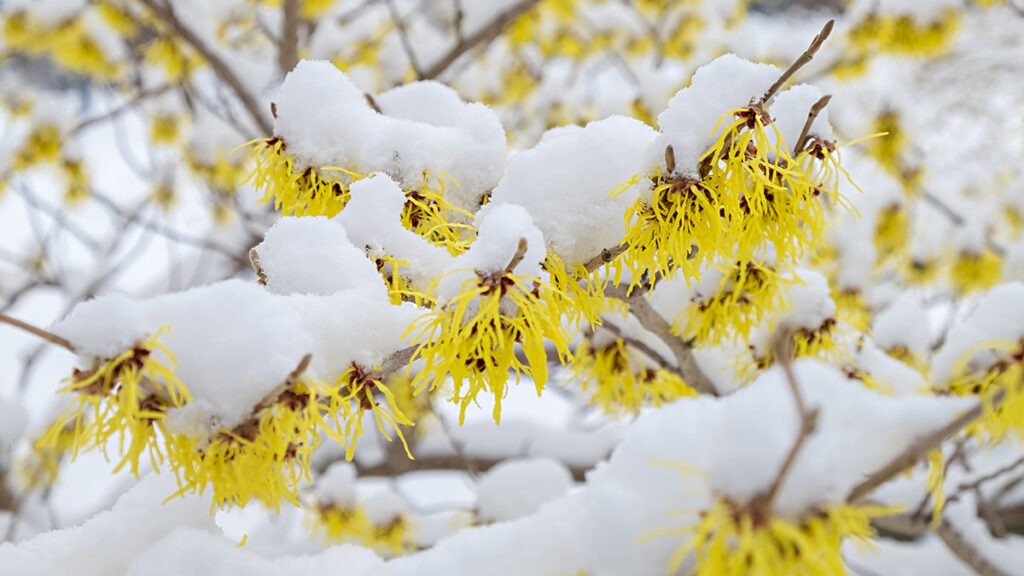
Witch hazel boasts unique spidery flowers that unfurl in mid to late winter. They range in color from vibrant yellow to fiery orange and red, and emit a subtle, spicy fragrance.
USDA hardiness zones: 3-9
Sun exposure: Full to partial sun
Bloom time: Late winter to early spring
Soil needs: Well-drained, acidic soil
3. Camellia (Camellia japonica)
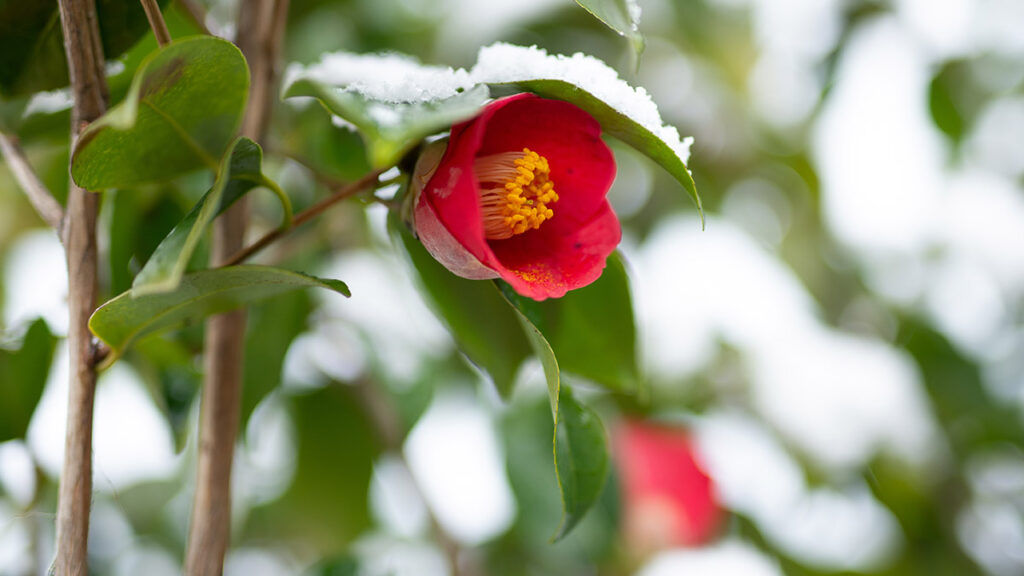
Camellias come in various shades, including classic white, pink, and vibrant red. Known for their glossy leaves and delicate petals, these evergreen shrubs can be grown in containers or as part of a garden landscape.
USDA hardiness zones: 7-9
Sun exposure: Partial shade
Bloom time: Late fall through early spring
Soil needs: Moist, well-drained, slightly acidic soil
4. Winter jasmine (Jasminum nudiflorum)
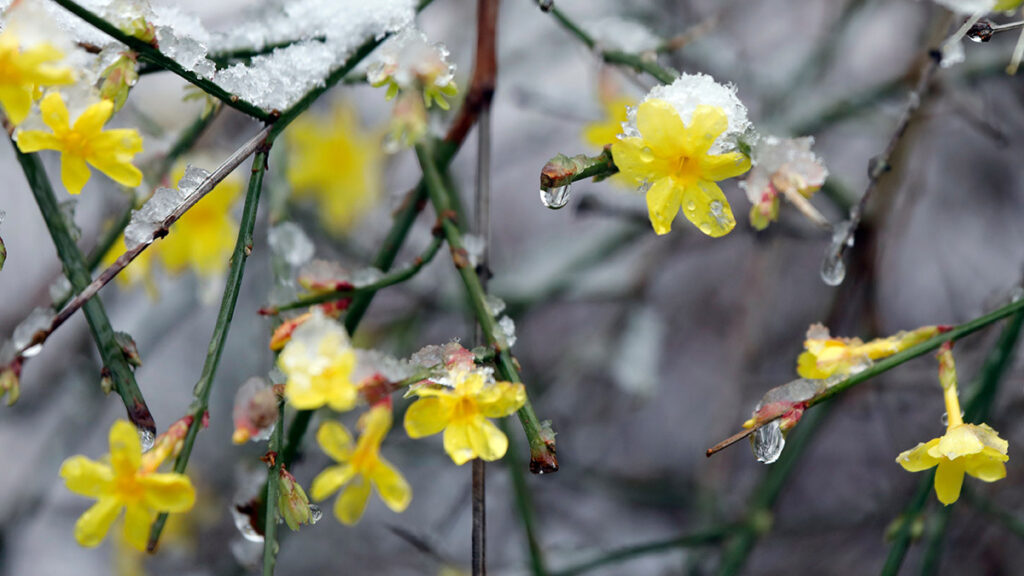
Winter jasmine produces an abundance of cheerful star-shaped yellow flowers along its arching stems. This deciduous shrub is easy to grow and can be trained to climb walls or trail along the ground.
USDA hardiness zones: 6-10
Sun exposure: Full sun to partial shade
Bloom time: Late winter to early spring
Soil needs: Well-drained soil
5. Pansy (Viola tricolor)
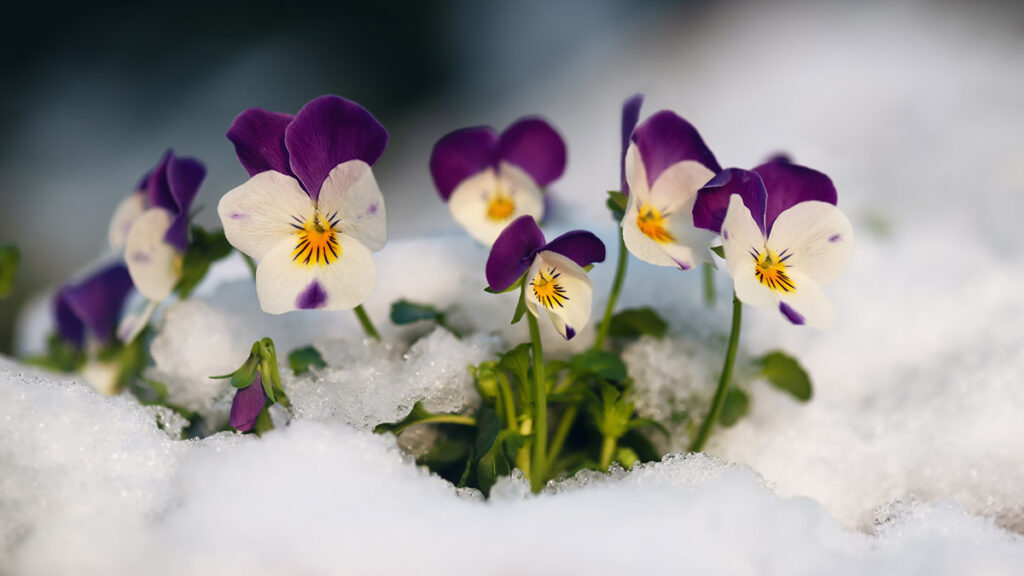
Pansies are well-loved for their charming, "face-like" blooms that come in various shades, including blues, purples, and yellows. These hardy annuals typically grow in bunches, close to the ground, and are ideal for containers, borders, or bedding displays.
USDA hardiness zones: 4-8
Sun exposure: Full sun to partial shade
Bloom time: Fall through spring
Soil needs: Well-drained, fertile soil
6. Snowdrop (Galanthus)
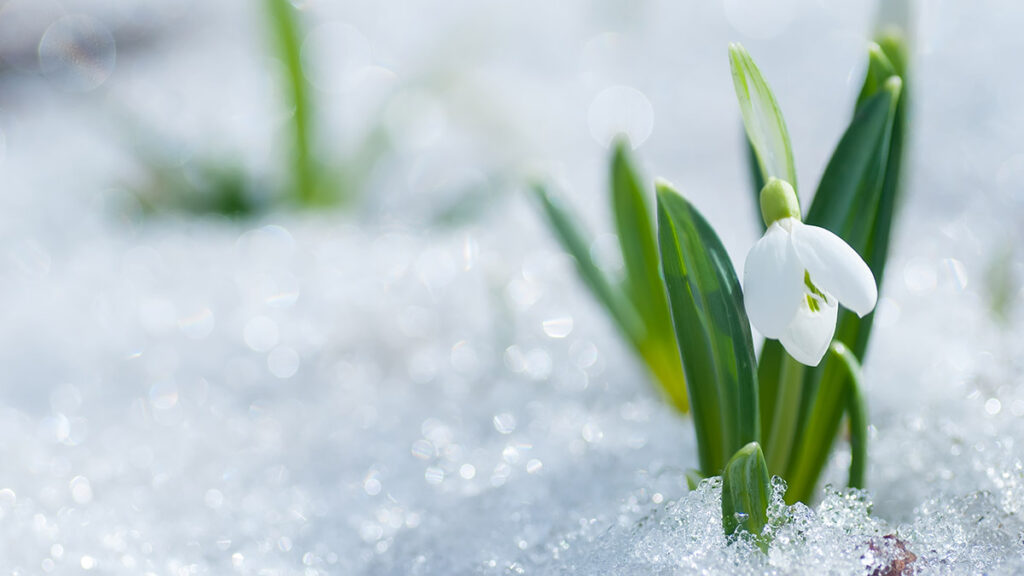
The snowdrop is a small, bell-shaped flower with white petals that often pushes through the snow. One of January's birth flowers, these charming-looking blooms typically top out at 6 inches tall and grow in clumps or clusters.
USDA hardiness zones: 3-7
Sun exposure: Partial to full shade
Bloom time: Late winter to early spring
Soil needs: Well-drained, humus-rich soil
7. Cyclamen (Cyclamen coum)
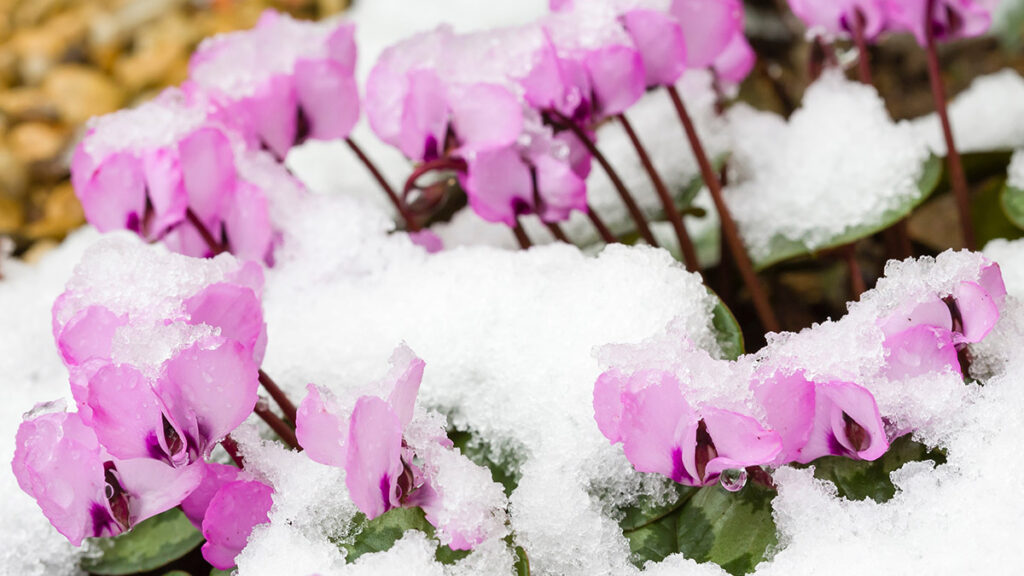
Cyclamen's pretty heart-shaped, patterned leaves and white, violet, pink, or red nodding flowers make them popular houseplants during the winter. In nature, they are commonly found on the forest floor; in a landscape setting, they make excellent ground cover and do best when planted in wooded areas under trees or shrubs.
USDA hardiness zones: 5-9
Sun exposure: Partial to full shade
Bloom time: Late winter to early spring
Soil needs: Well-drained, slightly alkaline soil
8. Winter aconite (Eranthis hyemalis)
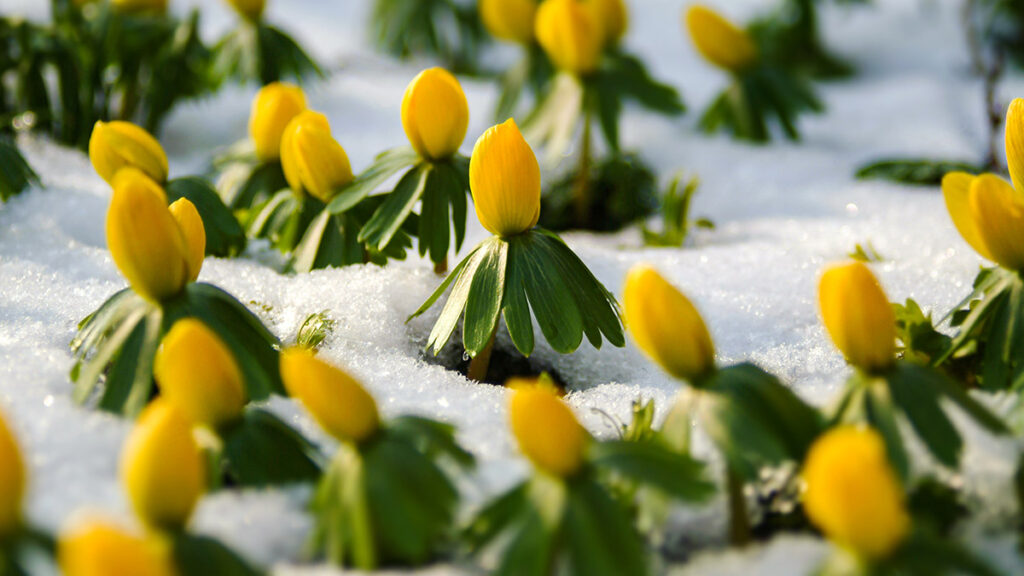
Winter aconite boasts distinctive yellow, cup-shaped flowers surrounded by a collar of deeply divided, glossy green leaves. This low-growing herbaceous plant is commonly found in woodland settings, meadows, or along the edges of deciduous forests.
USDA hardiness zones: 4-7
Sun exposure: Full to partial sun
Bloom time: Late winter to early spring
Soil needs: Well-drained soil
9. Iris reticulata
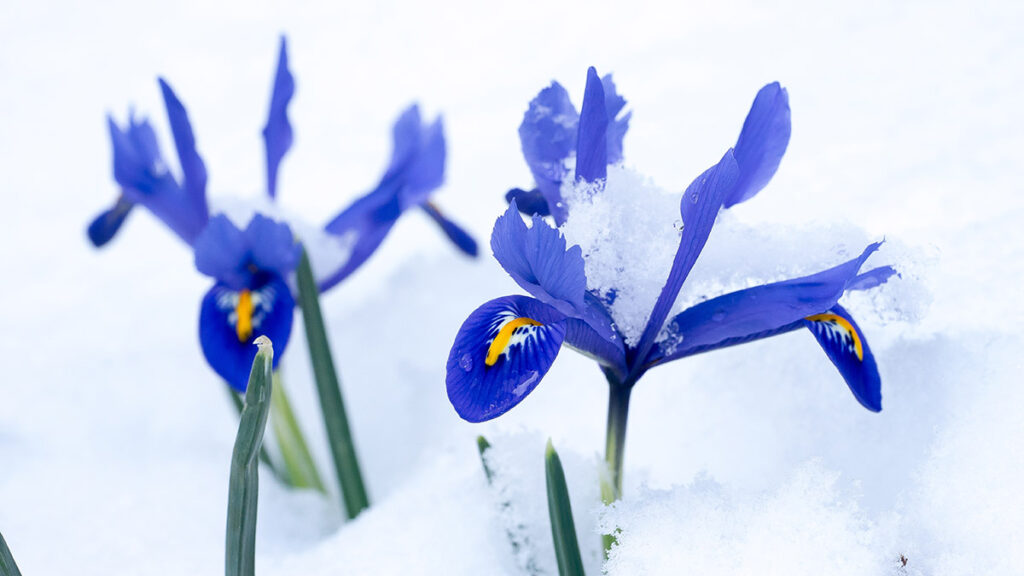
This small but stunning iris produces intricate flowers in purple, blue, and white. Its flowers have three distinct outer petals (called "falls") that arch downward and three inner petals (called "standards") that stand upright.
USDA hardiness zones: 5-9
Sun exposure: Full sun to partial shade
Bloom time: Late winter to early spring
Soil needs: Well-drained, slightly acidic soil
10. Heather (Calluna vulgaris)
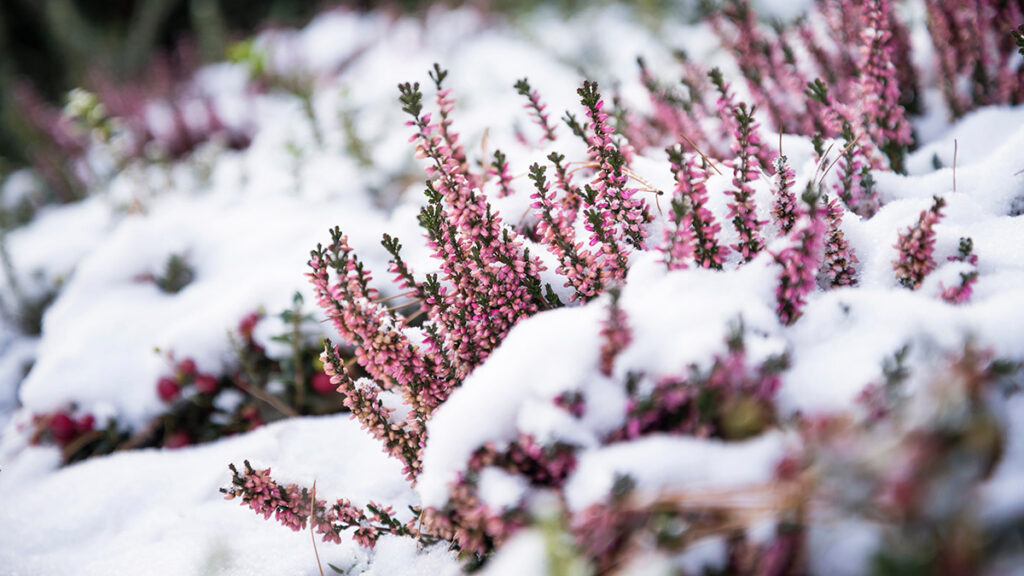
Heather is an evergreen shrub known for its small, needle-like leaves and vibrant, often bell-shaped flowers that are arranged in clusters. The winter-flowering varieties offer hues of pink, white, and purple.
USDA hardiness zones: 4-6
Sun exposure: Full sun
Bloom time: Late winter to early spring
Soil needs: Well-drained, acidic soil
11. Primrose (Primula vulgaris)
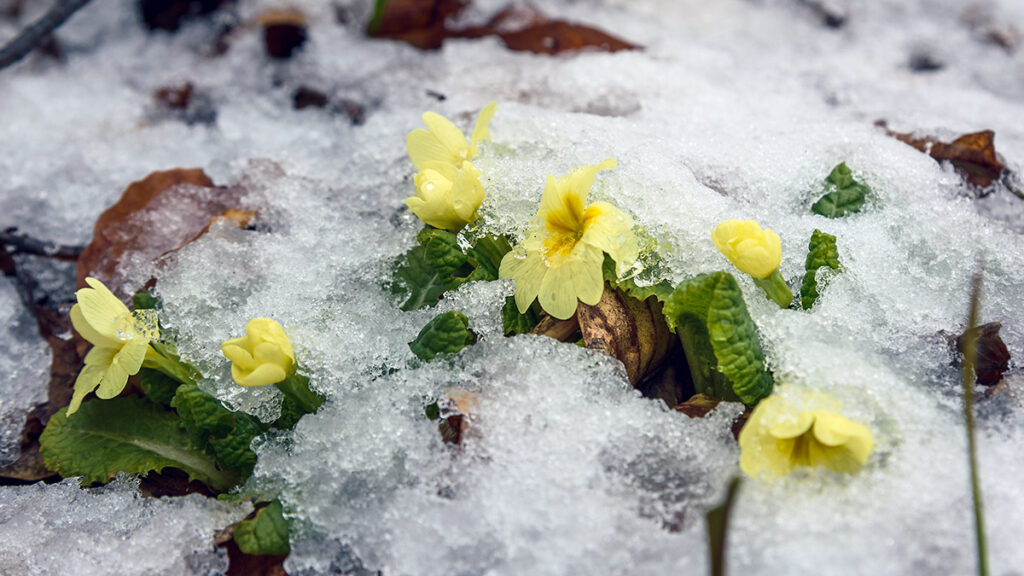
A well-loved herbaceous perennial, primrose typically has pale yellow flowers, though they can range in color from cream to bright yellow. The blooming period for these versatile plants lasts from late winter all the way to early summer.
USDA hardiness zones: 3-8
Sun exposure: Partial to full shade
Bloom time: Late winter to early spring
Soil needs: Moist, well-drained soil
12. Berberis x hortensis
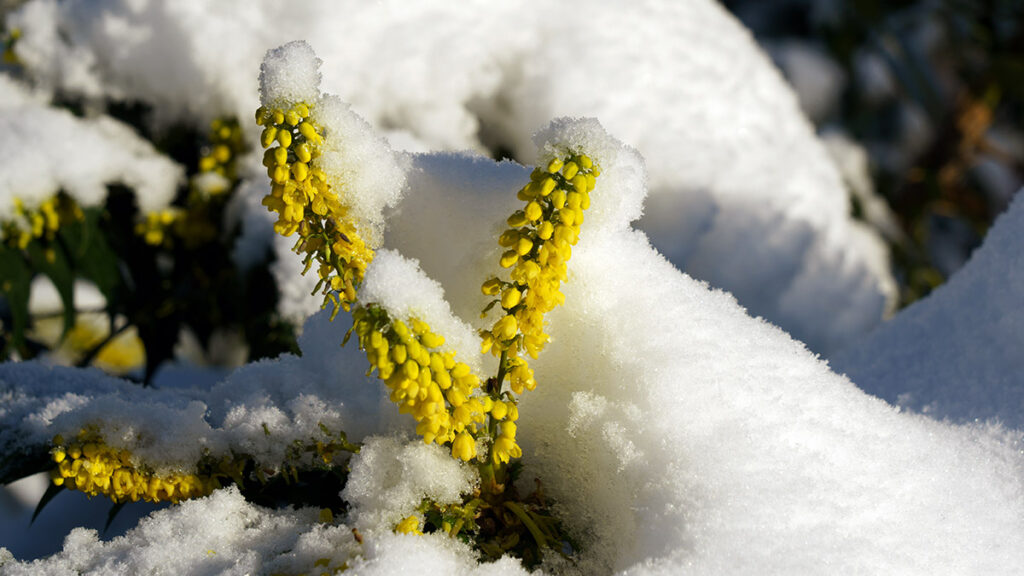
Featuring fragrant yellow flowers that appear in late winter to early spring, this flowering evergreen shrub reaches a towering height of 6 to 10 feet. The flowers are followed by clusters of small, grape-like berries that ripen to a dark blue or purplish-black color.
USDA hardiness zones: 6-9
Sun exposure: Full to partial shade
Bloom time: Late winter to early spring
Soil needs: Well-drained, acidic soil
13. Winterberry (Ilex verticillata)

Winterberry is a holly species that typically grows between 6 and 15 feet in height. This deciduous shrub is best known for its vibrant red berries, which serve as a valuable food source for birds during the winter months.
USDA hardiness zones: 3-9
Sun exposure: Full sun to partial shade
Bloom time: Late spring
Soil needs: Moist, acidic soil
14. Pieris (Pieris japonica)
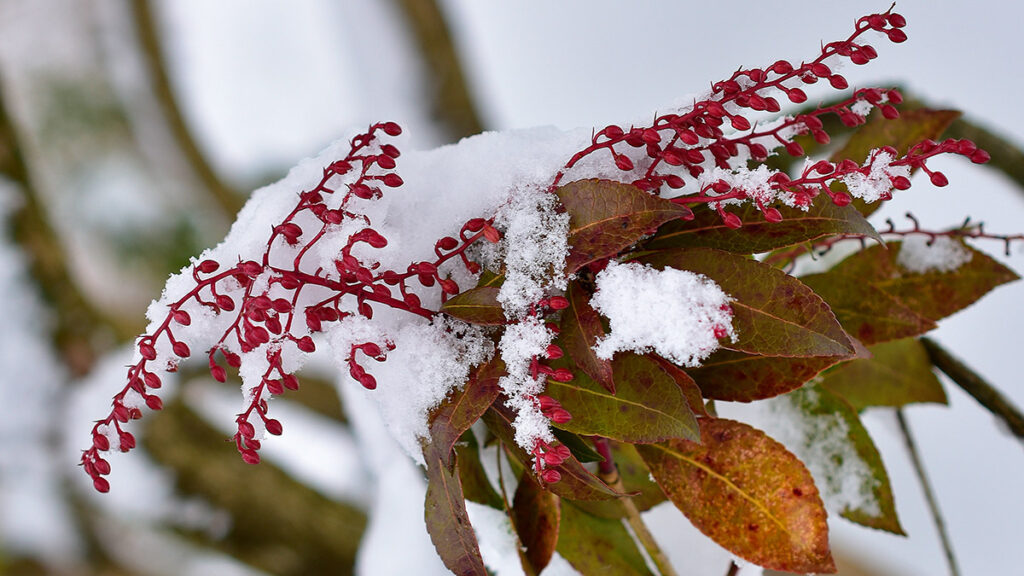
Widely cultivated for its attractive foliage, showy flowers, and overall ornamental appeal, pieris is an evergreen shrub with drooping clusters of urn-shaped flowers. Most varieties sport white flowers, though some may have a pink or reddish tint, and reach a height of 6 to 12 feet.
USDA hardiness zones: 5-8
Sun exposure: Partial shade
Bloom time: Late winter to early spring
Soil needs: Moist, well-drained, acidic soil
15. Crocus (Crocus vernus)
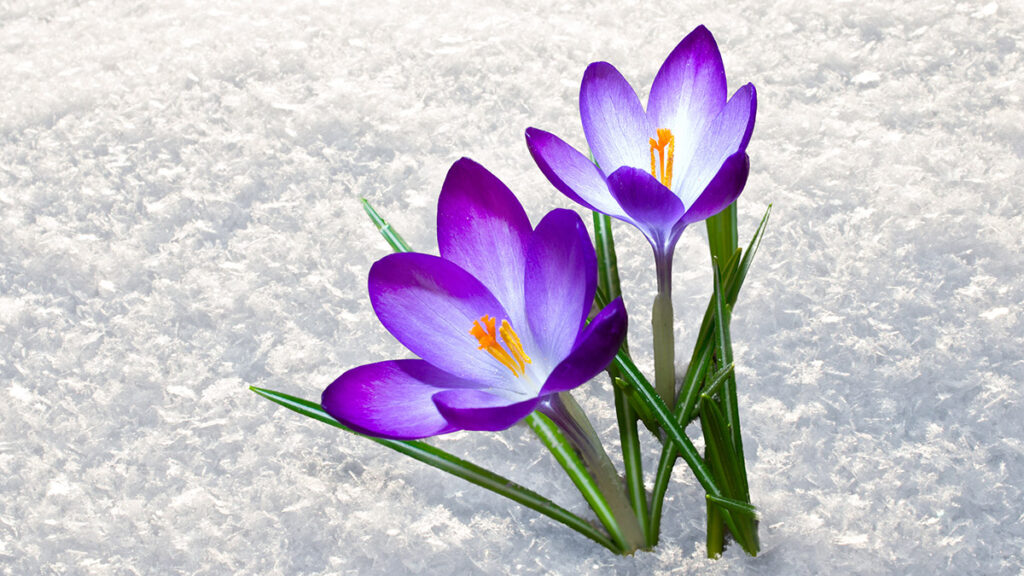
Crocuses are small perennials that possess brightly colored, cup-shaped flowers with pointed petals. They come in an array of colors, including shades of purple, violet, white, yellow, and even striped varieties, and grow low to the ground, rarely reaching heights of more than 6 inches.
USDA hardiness zones: 3-8
Sun exposure: Full sun to partial shade
Bloom time: Late winter to early spring
Soil needs: Well-drained soil


